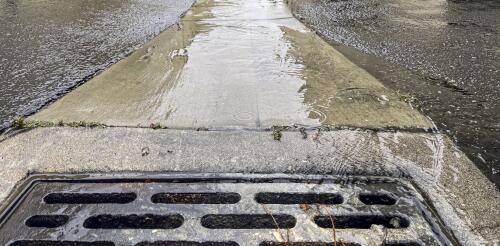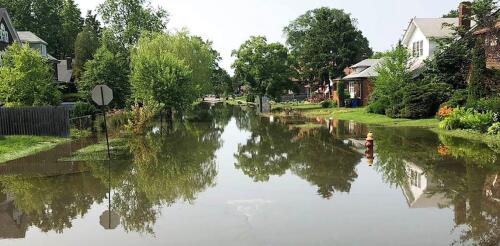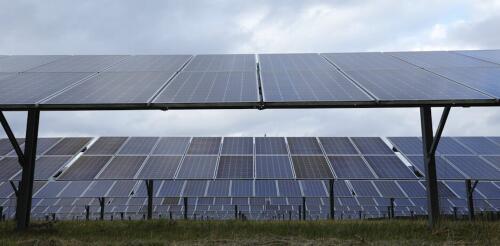Local
Colorado has highly pathogenic avian influenza – also known as HPAI or bird flu – on a dairy farm, the ninth state with confirmed cases. The U.S. Department of Agriculture’s National Veterinary Services Laboratories confirmed the virus on April 25, 2024, in a herd in northeast Colorado. This farm is one of 35 dairy farms across the U.S. with verified cases of bird flu in cattle as of May 7, 2024, according to the USDA. Bird flu is not new to Colorado. The state experienced an outbreak in poultry that began in 2022. Since then, the USDA’s Animal and Plant Health Inspection Service has reported that 6.3 million birds in nine commercial flocks and 25 backyard flocks have been affected by the virus. The most recent detection was in February 2024. But this is the first time the disease has made cattle in Colorado sick. I’m a veterinarian and epidemiologist at Colorado State University who focuses on infectious diseases in dairy cows. I spent many years...
“When it rains, it pours” once was a metaphor for bad things happening in clusters. Now it’s becoming a statement of fact about rainfall in a changing climate. Across the continental U.S., intense single-day precipitation events are growing more frequent, fueled by warming air that can hold increasing levels of moisture. Most recently, areas north of Houston received 12 to 20 inches (30 to 50 centimeters) of rain in several days in early May 2024, leading to swamped roads and evacuations. Earlier in the year, San Diego received 2.72 inches (7 centimeters) of rain on Jan. 22 that damaged nearly 600 homes and displaced about 1,200 people. Two weeks later, an atmospheric river dumped 5 to 10 inches (12 to 25 centimeters) of rain on Los Angeles, causing widespread mudslides and leaving more than a million people without power. Events like these have sparked interest in so-called sponge cities – a comprehensive approach to urban flood mitigation that uses i...
Bat populations in Colorado may be headed for a decline that could cause ecological disruptions across the state. Two bats discovered in Boulder County in late February 2024 were confirmed to have white-nose syndrome, a deadly fungal disease. Additional bats in Larimer County also tested positive for white-nose syndrome early this spring. The first North American bats with white fungus on their faces, ears and wings were discovered in 2006 in caves where they hibernated near Albany, New York. The fungus causes bats to lose nutrients and moisture through their skin and to wake early from hibernation in search of food and water. The disease spread west quickly, reaching Washington state in 2015 and California four years later. It was confirmed in Montana and New Mexico by 2021. Evidence of the fungus was first reported in Colorado in the summer of 2022. I’m a bat biologist, and most of my research has focused on the genetics of Myotis bats. Knowing which bat populations a...
In 2021, metro Detroit was hit with a rainstorm so severe that President Joe Biden issued a major disaster declaration at state officials’ request. Nearly 8 inches of rain fell within 24 hours, closing every major freeway and causing massive damage to homes and businesses. The storm was of a severity historically seen in Detroit every 500 to 1,000 years. But over the past decade, the region has experienced several other storms only slightly less destructive, one in August 2023. As the planet warms, severe rains – and the flooding that follows – may become even more intense and frequent in cities like Detroit that have aging and undersized stormwater infrastructure. These extreme events put enormous pressure on communities, but low-income urban neighborhoods tend to suffer the most I am a geomorphologist at the University of Michigan-Dearborn specializing in urban environments, water, historical mapping and flood-risk equity. My recent research, conducted...
Michigan residents overwhelmingly want more solar power. In the spring of 2023, nearly two-thirds of 1,000 state residents surveyed supported additional large-scale solar development. In the Energy Values Lab at Michigan State University, we study how the public, and specifically community members living near large-scale wind and solar projects, perceive those projects and the processes by which they are approved. According to a survey we conducted in the fall of 2023 that has not yet been peer reviewed, there may be less support in urban Michigan communities, particularly among those already living close to an existing solar project. Fewer than half of the 158 residents who took our survey supported their local project. And around the 10-acre, DTE Energy-owned O’Shea Solar Park in Detroit, support was even lower, with only a third of respondents supporting that project. What predicted residents’ support of their local project? Mainly whether they saw the deve...




